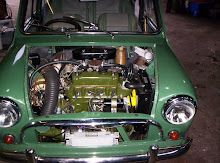Before starting work it is necessary to assemble, in addition to the usual tools used for routine maintenance, a valve spring compressor (it may be possible to hire this from a local garage, as it will not be required again until the engine is next decarbon¬ized), a blunt scraper, a valve-grinding tool of the rubber suction-cup type, a small tin of valve-grinding paste containing both fine and coarse grades, a plentiful supply of clean rags, free from fluff, a selection of boxes, tins or jars in which small parts can be deposited pending reassembly, a wire brush, paraffin, and a dish or tray in which to swill the parts.
It is advisable to renew all gaskets. The expense is small and is an insurance against water or gas leakages after the engine has been re¬assembled, which would, of course, entail the dismantling and reassembly of the parts. If a defective cylinder-head gasket allows water to leak into the cylinders and from these into the transmission casing, serious damage may be done. Again, although no external leakage may be apparent, gas may leak between adjacent cylinders, where the gasket is narrow and is subject to relatively high pressure, causing misfiring and loss of power which may be difficult to diagnose.
A set of new valve springs is a worthwhile investment. If the top overhaul is carried out properly it can be anticipated that the car will run for upwards of 20,000 miles before the head is next removed; but "tired" valve springs can undo all the careful work put into the overhaul. A set of small rubber oil-sealing rings that are fitted to the valve stems will also be required.
When purchasing these parts, ask the dealer whether he can let you have an old piston ring which will fit the bores; this will be useful when decarbonizing the pistons, as described later.
Saturday, 17 October 2009
Tools and Spares Required
Posted by Info Mini Cars at 02:05
Subscribe to:
Post Comments (Atom)


0 comments:
Post a Comment